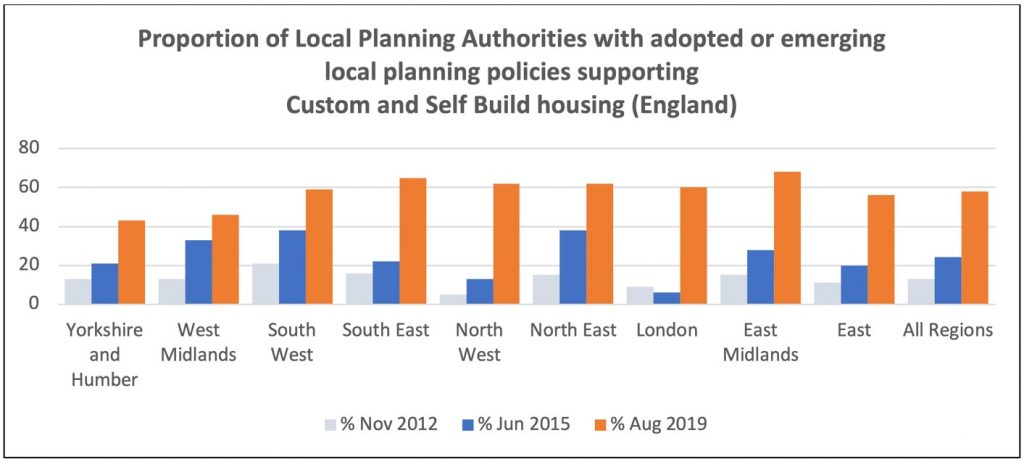An analysis of all local plans across England, by the Right to Build Task Force has revealed that 58% of local planning authorities have, or are bringing on, policies that support custom and self-build housing delivery
Local plans are a key tool available to help authorities meet their legal duties under the Self-build and Custom Housebuilding Act 2015.
This comes in the run-up to Right to Build Day, when authorities must evidence that they have matched numbers on their Right to Build registers with sufficient development permissions.
The analysis revealed that 76% of authorities who have adopted a local plan after the legislation was introduced, now have a planning policy which supports custom and self-build housing, up from 13% from the pre-legislation position prior to April 2016.

It also found that while adopted post-legislation plans are becoming more ambitious, few offer the necessary support within the spirit of the legislation and Government policy. Most only include vague policies supporting custom and self-build housing in principle, without enabling development to come forward.
However, the analysis also revealed that of those authorities who are introducing new policies, there are some good practice examples emerging that should encourage more sector growth.
The main policy approaches being used were:
- Land allocations and identification of larger sites: 28%
- Affordable housing policies: 24%
- ‘Percentage policies’: 19%
In particular, the research found that some authorities were taking a ‘package’ approach by setting out a wider delivery strategy with a mix of policies. The Right to Build Task Forces considers this to be good practice in local plan preparation.
Two examples serve to illustrate this approach
Bristol City Council’s emerging local plan sets out a range of measures. These include site allocations, support for community-led housing projects to provide affordable housing, a percentage policy for larger sites, and identified opportunities in growth areas.
Stratford-on-Avon District Council’s adopted Core Strategy. This supports custom and self-build as an integral part of the housing mix within identified new settlements; setting a requirement that at least 5% of plots should be made available to self-builders on larger housing sites; allocating sites; and, policy support for custom and self-build on unallocated sites.
‘Package’ approaches can accelerate more custom and self-build housing projects, especially if combined with Supplementary Planning Documents or guidance which some authorities have introduced.
Mario Wolf, director of the Right to Build Task Force, said: “The Right to Build Task Force works with a range of stakeholders, many of whom are local authorities, to facilitate custom and self-build, and welcomes the findings that two-thirds of English authorities now have policy provision for custom and self-build.
“However, our research has also found that there is a long way to go. It is unacceptable that almost 5 years on from the 2015 Act that almost one in three adopted post-legislation plans and one in four emerging local plans are making no provision for custom and self-build housing.
“We hope that those authorities without policies will soon act to ensure that their local plan facilitates more local communities to build owner-commissioned homes.
“Thanks to its breadth of expertise in custom and self-build, the Task Force is uniquely placed to support authorities, and other stakeholders, to bring forward local initiatives which can help scale up much needed additional housing supply whilst also delivering better-designed homes that more people aspire to live in and that communities are happier to see built.”







![[VIDEO] Local planning inspector recruitment to begin in earnest in new year A drive to recruit local planning inspectors will begin in the new year](https://www.pbctoday.co.uk/news/wp-content/uploads/2025/12/iStock-2159482095-2-218x150.jpg)





![[VIDEO]Government launches new online appeal service for local planning authorities Group of young coworkers using computers in their group office, representing the new online appeals service](https://www.pbctoday.co.uk/news/wp-content/uploads/2025/12/iStock-2191280160-218x150.jpg)